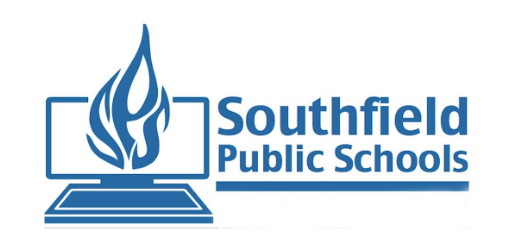Kids Voices Matter Program
Keeping Kids Safe Both Off & Online
Child and Teen Safety Prevention Education
The Kids Voices Matter Program is an evidence-based, age-appropriate child safety curriculum. This program is dedicated to teaching children and teens how to maintain safety both offline and online. It provides comprehensive education and empowering strategies to children and relevant adults in Wayne and Oakland Counties in Michigan, enabling them to prevent, recognize, and respond effectively to bullying, cyberbullying, various forms of abuse, and digital dangers.
Our Approach to Empowerment
- Evidence-Based Curriculum: We use a research-backed curriculum designed to educate children on how to stay safe both offline and online, covering critical topics like child exploitation, cyberbullying, and all forms of abuse.
- Interactive Learning: Our certified facilitators use an approach that involves engaging children through interactive lessons and activities that encourage active participation and understanding.
- Community Collaboration: We work closely with schools, youth-serving organizations, and families to deliver our programs, ensuring a wide-reaching impact.
Grade Level Curriculums
Kindergarten
Explore key safety concepts with our youngest learners as they journey into personal safety and awareness.
- Kindergarteners will learn about bullying, what makes someone a safe adult, and how to spot danger.
- The program includes fun activities that teach kids how to be safe online.
- They'll understand the importance of personal space and how to talk about it.
- Children will also learn how to pick a Safety Buddy and why it's important.
- They'll get better at noticing the warning signs of unsafe situations.
- Students will also know what information about themselves should be kept private and when it's okay to share it with trusted adults.
This program helps young children grasp important safety concepts through engaging and age-appropriate activities, ensuring they know how to stay safe in different situations.
1st Grade
First graders will enhance their understanding of personal safety through engaging lessons that build on foundational safety concepts and introduce digital awareness.
- Understanding personal safety and general safety concepts.
- Understanding potential threats to children and recognizing harmful behaviors.
- Applying the MBF 5 Safety Rules© to stay safe in different situations.
- Identifying two Safe Adults and knowing what to share with them.
- Learning about Safety Buddies and how to use them for safety.
- Understanding different types of abuse including verbal and physical.
- Spotting Red Flags that show when situations are unsafe.
- Knowing personal and guardian information and when to share it safely.
- Reviewing and practicing the MBF 5 Safety Rules©.
- Learning about bullying and the roles of bystanders and upstanders.
- Understanding digital dangers and how to stay safe online.
These lessons empower first graders to confidently navigate their world, both real and digital, by equipping them with essential safety skills and knowledge. This holistic approach fosters a safe and informed environment where children can thrive.
2nd Grade
For 2nd graders in the Kids Voices Matter program, our curriculum is designed to enhance their awareness and understanding of personal safety through engaging and age-appropriate activities. Here's what students will learn:
- Personal Safety Basics: Students grasp essential safety concepts and learn to recognize who might harm them and how.
- MBF 5 Safety Rules©: Each child learns to apply these rules to identify and react properly to dangerous situations.
- Safe Adults and Buddies: Children identify trustworthy adults and understand the role of a Safety Buddy in their safety plan.
- Understanding Abuse: Students increase their awareness of verbal and physical abuse and learn to spot warning signs.
- Red Flags and Personal Information: They practice recognizing red flags and understand the importance of their personal information, knowing when and how to share it safely.
- Bullying and Digital Safety: The curriculum covers bullying dynamics, including the roles of bystanders and upstanders, and imparts crucial tips for navigating digital spaces safely.
This structure ensures that children not only retain vital safety information from their first lessons but continue to build upon that foundation with each subsequent class, preparing them to act wisely in both their real and digital lives.
3rd Grade
For 3rd graders in the Kids Voices Matter program, the curriculum aims to deepen their understanding of personal safety and how to effectively respond to unsafe situations. Here’s a detailed breakdown of what students will learn:
- Understanding Personal Safety: Students explore essential safety concepts and learn to recognize potential harm.
- MBF 5 Safety Rules©: Emphasis is placed on applying these rules to identify and safely respond to threats.
- Safe Adults and Friends: Kids identify and communicate with at least two trusted adults and learn the significance of having a Safe Friend.
- Child Abuse Awareness: Students are introduced to the four types of child abuse, helping them understand and recognize each form.
- Recognizing Red Flags: Through various activities, students practice spotting warning signs of unsafe situations.
- Peer Interactions: The curriculum covers how to handle harm from peers, including bullying, cyberbullying, and the roles of bystanders and upstanders.
- Character Education: Children identify positive traits in themselves and others, promoting a supportive community.
- Digital Safety: Students gain insights into digital dangers and learn best practices for navigating online spaces safely.
This comprehensive approach ensures that students not only retain key safety concepts from previous lessons but continue to develop critical skills to protect themselves and others in both their immediate and digital environments.
4th Grade
For 4th graders in the Kids Voices Matter program, the curriculum is structured to enhance their understanding of personal safety, the identification of unsafe situations, and the development of critical response skills. Here’s what the program includes:
- Personal Safety Concepts: Students deepen their understanding of personal safety and general safety concepts.
- MBF 5 Safety Rules©: Emphasis on mastering these rules to recognize and respond to unsafe situations effectively.
- Identifying Safe Adults and Friends: Students learn to identify at least two safe adults and understand the role of a Safe Friend in their safety plan.
- Child Abuse Awareness: Introduction to the four types of child abuse, equipping students with the knowledge to recognize various abuse forms.
- Recognizing Red Flags: Continued practice in spotting warning signs of unsafe situations.
- Healthy vs. Unhealthy Relationships: Discussion on signs of healthy and unhealthy relationships to foster awareness.
- Knowledge of Harm: Insight into harm from peers, predators, and self-inflicted situations.
- Bullying and Cyberbullying: Education on bullying, including cyberbullying, with strategies to handle and report such incidents.
- Digital Safety: Enhancement of digital safety practices to navigate online spaces securely.
- Barriers to Telling: Students learn about barriers to reporting abuse and how to access help and resources effectively.
This comprehensive curriculum is designed to build on previously introduced concepts while introducing new skills and knowledge that cater to the developmental needs of 4th graders, preparing them to handle various challenges both offline and online.
5th Grade
Students in 5th grade will deepen their understanding of personal safety and general safety concepts. They will explore and apply the MBF 5 Safety Rules© to effectively respond to unsafe situations. Here's what they will learn:
- Child Safety Awareness: Recognize who can harm children and the ways harm can occur.
- Safe Adults: Identify and interact with at least two Safe Adults, sharing crucial information for safety.
- Safe Friends: Understand and utilize the concept of a Safe Friend for additional security.
- Types of Abuse: Gain a thorough understanding of the four types of child abuse.
- Red Flags: Recognize Red Flags that signal unsafe situations and learn how to act accordingly.
- Lesson Retention: They will revisit and reinforce concepts from previous lessons, applying the MBF 5 Safety Rules© in various scenarios.
- Bullying Awareness: Increase their awareness of bullying, cyberbullying, and the importance of empathy and kindness.
- Character Education: Learn to identify positive character traits within themselves and others, fostering a supportive and respectful community.
- Online Dangers: Understand the risks associated with online interactions with peers and predators, and their own online behaviors.
- Digital Safety: Enhance their skills in spotting digital dangers and practicing safe online habits.
- Digital Reputation: Learn the significance of maintaining a good digital reputation, crucial for their current and future interactions online.
These comprehensive lessons equip 5th graders with the tools they need to navigate their environments safely, emphasizing both offline and online contexts.
6th Grade
In 6th grade, students will build upon their understanding of personal safety with targeted lessons aimed at helping them navigate increasingly complex social and online environments. They will engage with the following concepts:
- Safety Rules Application: Learn and consistently apply the MBF 5 Safety Rules© to effectively recognize and respond to unsafe situations.
- Safe Relationships: Identify and effectively communicate with Safe Friends and Safe Adults to seek guidance and access safety resources.
- Digital Citizenship: Understand the responsibilities and behaviors of a good digital citizen.
- Cyberbullying Awareness: Define cyberbullying and learn strategies to handle and prevent it in digital spaces.
- Digital Risks: Recognize and avoid potential dangers from peers, self-generated risks, and external threats online.
- Understanding Sextortion: Define sextortion, learn about its perpetrators, and identify actionable steps if targeted.
- Healthy Relationships: Differentiate between healthy and unhealthy relationship indicators and understand their implications.
- Lesson Retention: Demonstrate an understanding of previous lessons by identifying Safe Adults and Safe Friends.
- Recognizing Abuse: Identify Red Flags for neglect, physical, emotional, and sexual abuse, and learn appropriate reporting mechanisms.
- Human Trafficking Awareness: Gain a clear understanding of the different types of human trafficking.
- Social Advocacy: Learn the importance of being an upstander rather than a bystander in various scenarios.
- Relationship Indicators: Deepen knowledge of the characteristics of healthy versus unhealthy relationships.
These structured lessons are designed to empower 6th graders with critical knowledge and skills, ensuring they are prepared to tackle both their immediate and future challenges.
7th Grade
Seventh-grade students continue to expand their skills in personal and online safety, focusing on deeper understanding and practical applications. The curriculum covers the following key areas:
- Safety Rules Mastery: Reinforce and apply the MBF 5 Safety Rules© to effectively recognize and respond to a variety of unsafe situations.
- Safe Communication: Learn to identify and communicate effectively with Safe Adults to discuss personal safety and access additional support.
- Digital Citizenship Skills: Enhance understanding of what it means to be a good digital citizen in today’s interconnected world.
- Bullying and Cyberbullying: Define and understand the nuances of bullying and cyberbullying, including prevention and response strategies.
- Digital Risk Management: Develop strategies to mitigate digital risks that arise from interactions with peers, personal online behavior, and external threats.
- Sextortion Awareness: Define sextortion, explore common tactics used by perpetrators, and learn steps to take if targeted.
- Concept Retention: Demonstrate a solid understanding of previous lessons by identifying Safe Adults and Safe Friends.
- Abuse Awareness: Identify and report Red Flags for neglect, physical, emotional, and sexual abuse.
- Human Trafficking Insights: Gain a comprehensive understanding of different types of human trafficking.
- Advocacy Skills: Practice the roles of upstander versus bystander in real-life scenarios.
- Relationship Literacy: Deepen understanding of healthy versus unhealthy relationships, recognizing key indicators and the potential consequences of relationship abuse.
These components are designed to equip 7th graders with the necessary tools to navigate their increasingly complex social environments safely and responsibly.
8th Grade
Eighth-grade students will deepen their understanding and application of safety concepts through the following curriculum components:
- Safety Rules Application: Continuously apply the MBF 5 Safety Rules© to recognize and effectively respond to a range of unsafe situations.
- Safe Adult Interaction: Enhance skills in identifying and communicating with Safe Adults for safety concerns and accessing further support.
- Digital Self-Awareness: Explore how self-awareness impacts digital safety and personal online behaviors.
- Bullying and Cyberbullying: Increase knowledge on bullying and cyberbullying, learn reporting procedures, and promote a culture of kindness and respect.
- Digital Risk Avoidance: Develop strategies to mitigate digital risks that come from peer interactions, personal behaviors, and external influences.
- Sextortion Understanding: Define sextortion, understand its emotional impacts, and learn practical steps to take if targeted.
- Concept Mastery: Demonstrate a solid grasp of previous safety concepts by consistently identifying Safe Adults and Safe Friends.
- Abuse Red Flags: Identify and understand how to report Red Flags associated with neglect, physical, emotional, and sexual abuse.
- Human Trafficking Awareness: Gain a detailed understanding of different types of human trafficking and their implications.
- Active Bystander Skills: Engage actively in scenarios as an upstander rather than a bystander.
- Sexual Assault Awareness: Learn about sexual assault, including prevention, reporting mechanisms, and supporting victims.
- Healthy Relationships: Identify key indicators of healthy versus unhealthy relationships and understand the consequences of relationship abuse.
This comprehensive approach aims to prepare 8th graders with the necessary skills and knowledge to safely navigate their environments, both online and offline, fostering a secure and supportive community.
9th-12th Grade
High school students will expand their understanding and application of safety measures through the following detailed curriculum:
- Safety Rules Mastery: Consistently apply the MBF 5 Safety Rules© to recognize and effectively manage unsafe situations.
- Safe Adult Communication: Develop skills to identify and communicate effectively with Safe Adults regarding safety concerns and accessing support.
- Digital Self-Awareness: Explore the relationship between self-awareness and digital safety, emphasizing personal responsibility.
- Bullying and Cyberbullying: Enhance understanding of bullying and cyberbullying; learn strategies for responding and promoting an upstander culture.
- Digital Risk Management: Learn to navigate and mitigate digital risks from peers, personal behaviors, and external threats.
- Sextortion Prevention: Define sextortion, discuss methods to support peers affected by sextortion, and learn steps to protect oneself from such threats.
- Concept Review: Reinforce safety concepts from earlier lessons by ensuring the ability to identify Safe Adults and Safe Friends.
- Recognizing Abuse: Learn to spot and report Red Flags for neglect, physical, emotional, and sexual abuse.
- Human Trafficking Awareness: Deepen understanding of various forms of human trafficking and their impact.
- Active Bystander Engagement: Foster skills to actively intervene as an upstander in unsafe or abusive situations.
- Sexual Assault Education: Gain knowledge on recognizing, reporting, and preventing sexual assault.
- Relationship Dynamics: Understand and identify the elements of healthy and unhealthy relationships, recognizing the signs and consequences of relationship abuse.
This comprehensive curriculum aims to equip 9th-12th graders with advanced skills and knowledge to safely navigate complex social and digital environments, contributing to their overall well-being and safety.
Empowering Futures
Our Goals and Milestones
Introducing our Kids Voices Matter program into your school isn't just about meeting educational standards; it's about transforming lives. Through our targeted goals, we aim to significantly reduce the victimization of children and teens, foster a culture of awareness and safety, and promote healthy, equitable relationships within your community. As milestones, we focus on enhancing academic outcomes, increasing socio-emotional awareness, reducing instances of child abuse and neglect, and improving overall mental health among students. Partner with us to see these benefits come to life in your school, and let's schedule a meeting to discuss how we can tailor our program to meet your needs.
Together, we can build a safer, more empowered future for our children.
Goals
- Lower the victimization of children and teens
- Empower students, teachers, and parents to raise awareness and change the culture around child safety.
- Promote safe and equitable relationships.
Milestones
- Improve educational outcomes - academics.
- Increase social-emotional awareness.
- Reduce child abuse and neglect.
- Improve mental health.
Steps to Bring ACV to Your School
Bringing A Courageous Voice (ACV) to your school is a straightforward and impactful process designed to empower both students and educators with crucial safety education. By following a few simple steps, you can integrate our comprehensive Kids Voices Matter program into your school's curriculum, ensuring a safer and more informed environment for all. From initial contact to customized implementation and ongoing support, our team is dedicated to facilitating a seamless introduction of our program to meet your school's unique needs.
Let's work together to safeguard our children's futures.
Contact A Courageous Voice
Reach out through our website or direct contact information to express interest in our programs. Provide basic details about your school and your specific needs or concerns regarding child safety education.
Customize the Program
Together, we'll customize the Kids Voices Matter program to fit your school's schedule, student needs, and educational goals, ensuring the program effectively integrates with your existing curriculum.
Schedule a Meeting
We'll arrange an in-person meeting with your school's representatives to discuss our curriculum in detail, tailor our approach to your school's context, and address any questions you may have.
Implementation and Support
Once the program is agreed upon, we'll set dates for the sessions and provide continuous support and resources to maximize the program's impact, including training for educators.
"This is such a great program! My son really needed to hear about cyber safety."
Amanda - Detroit, MI
Contact us here
Contact Us
We will get back to you as soon as possible
Please try again later
Mailing Address
2510 Telegraph Road
STE L267
Bloomfield Twp., MI 48302
A Courageous Voice is a 501(c)3,
nonprofit organization
serving Wayne and Oakland Counties.
2025 A Courageous Voice All rights reserved.
Website Powered By: Ever Studios, LLC












